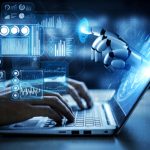When it comes to obtaining a mortgage, borrowers have various options to choose from, including adjustable-rate mortgages (ARMs). Unlike fixed-rate mortgages, which offer a consistent interest rate over the life of the loan, ARMs have an interest rate that adjusts periodically. In this blog post, we will explore the pros and cons of adjustable-rate mortgages, helping you make an informed decision about whether it is the right choice for your home financing needs.
Pros of Adjustable-Rate Mortgages:
1.Lower Initial Rates: One of the primary advantages of ARMs is that they typically start with a lower interest rate compared to fixed-rate mortgages. This can result in lower monthly mortgage payments, making homeownership more affordable, especially in the initial years of the loan.
2.Rate Flexibility: With an adjustable-rate mortgage, the interest rate adjusts periodically based on market conditions and economic factors. If interest rates decrease, borrowers may benefit from lower mortgage payments, potentially saving money over the life of the loan.
3.Shorter Adjustment Periods: Adjustable-rate mortgages often have a fixed interest rate for an initial period, such as three, five, or seven years, before the first adjustment occurs. This initial fixed-rate period allows borrowers to take advantage of the lower rate and plan their finances accordingly.
4.Potential for Early Repayment: ARMs can be advantageous for borrowers who plan to sell their homes or refinance before the interest rate adjusts. If borrowers anticipate a change in their financial situation or plan to relocate within the initial fixed-rate period, they can benefit from the lower initial rate without incurring the risk of future rate adjustments.
Cons of Adjustable-Rate Mortgages:
1.Uncertainty and Rate Volatility: The main drawback of adjustable-rate mortgages is the uncertainty associated with future rate adjustments. As interest rates are tied to market conditions, borrowers may experience fluctuations in their monthly mortgage payments, making it challenging to budget effectively.
2.Payment Shock: When the interest rate on an adjustable-rate mortgage adjusts, borrowers may experience payment shock if the rate increases significantly. This sudden increase in monthly payments can put a strain on household finances and may lead to financial stress if not anticipated or prepared for.
3.Lack of Stability: Fixed-rate mortgages provide stability and predictability with a consistent interest rate. In contrast, ARMs introduce an element of risk and unpredictability, making it more difficult to plan for the long term.
4.Potential for Negative Amortization: Some adjustable-rate mortgages have provisions that allow for negative amortization. This means that the monthly payments may not cover the full interest due, and the unpaid interest is added to the loan balance. As a result, borrowers may owe more on their mortgage over time instead of making progress in paying it down.

Considerations:
1.Market Conditions: Before choosing an adjustable-rate mortgage, it’s important to consider current market conditions and future interest rate projections. If rates are expected to rise significantly in the coming years, an ARM may not be the best choice, as it could lead to higher monthly payments in the future.
2.Personal Financial Situation: Evaluate your financial stability and ability to handle potential rate adjustments. Consider factors such as your income, job security, and future financial goals to determine if you are comfortable with the uncertainty that comes with an adjustable-rate mortgage.
3.Loan Duration: Assess your homeownership plans and how long you intend to stay in the property. If you plan to sell or refinance before the initial fixed-rate period ends, an ARM can be a suitable option. However, if you plan to stay in the property long-term, a fixed-rate mortgage may provide more stability.
4.Future Budgeting: Consider your ability to manage potential payment increases. Evaluate your budget and determine if you have sufficient flexibility to accommodate higher monthly payments in the event of rate adjustments.
Adjustable-rate mortgages offer advantages such as lower initial rates and potential savings in a declining interest rate environment. However, they also introduce uncertainties and potential risks associated with future rate adjustments. When deciding whether an adjustable-rate mortgage is suitable for your situation, carefully evaluate your financial stability, future plans, and comfort level with potential payment fluctuations. Consulting with a mortgage professional can also provide valuable guidance in making an informed decision about your home financing options.

















